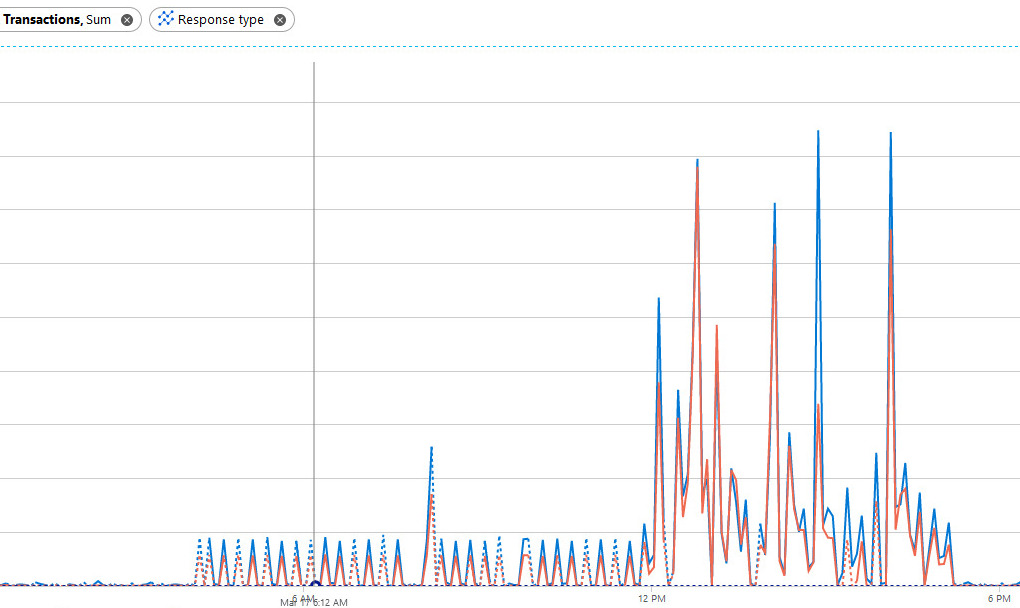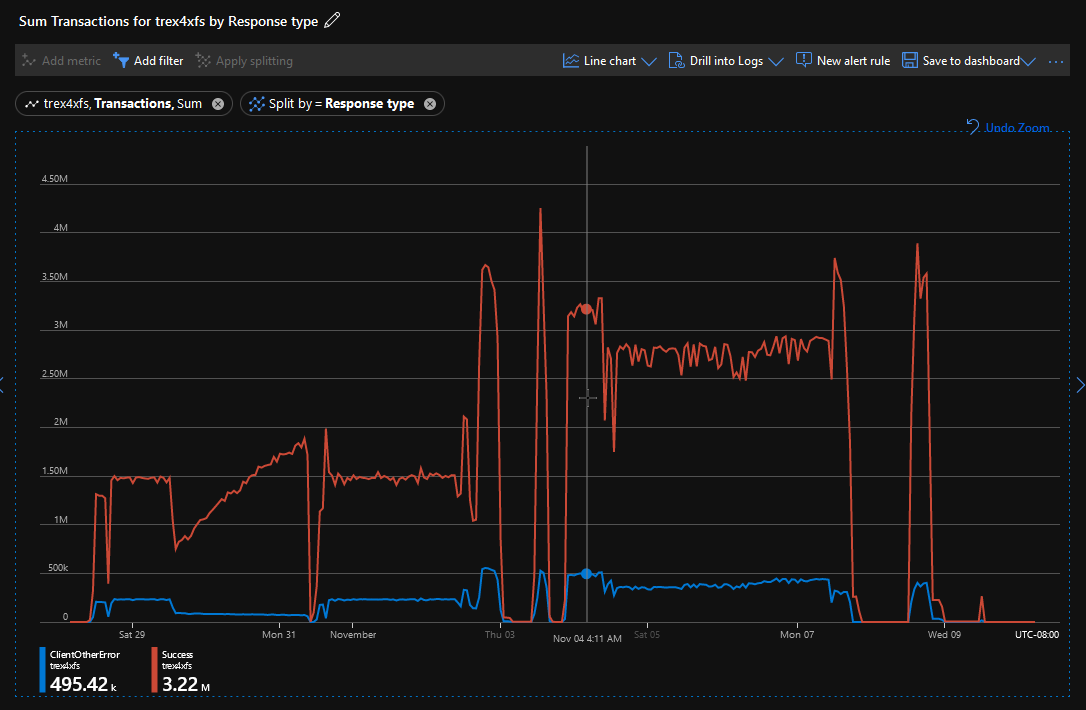ClientOtherError :
Authorized request that failed as expected. This error can represent
many 300-400 level HTTP status codes and conditions such as NotFound
and ResourceAlreadyExists.
We came across very high percentage of ClientOtherError (Failed transaction by response type) with our Azure blob storage. However, in our case this error can be ignored. This was happening because operations were being performed on files that didn't exist. They were basically successful API calls that return non 200 HTTP status code. In our scenario, Failed transaction by API name showed below items.
- DeleteFile
- GetBlobProperties
- GetFileProperties
blob storage example 1:
![enter image description here]()
blob storage example 2:
![enter image description here]()
ClientOtherError usually means expected errors, such as not found and resource already exists. If your code uses APIs such as Exists, Create***IfNotExist(for example, CreateTableIfNotExist), those errors will be encountered frequently. Some examples of operations that execute successfully but that can result in unsuccessful HTTP status codes include:
- ResourceNotFound (Not Found 404), for example from a GET request to a blob that does not exist.
- ResourceAlreadyExists (Conflict 409), for example from a CreateIfNotExist operation where the resource already exists.
- ConditionNotMet (Not Modified 304), for example from a conditional operation such as when a client sends an ETag value and an HTTP If-None-Match header to request an image only if it has been updated since the last operation.
In order to debug this further, you can use Azure storage logging which would log information about every operation performed against your storage account. It will include the HTTP code of every response.
Here is a list of common status codes. Many (not all) 300-400 level HTTP status code will result in ClientOtherError.
OP seems to face this problem with Azure file share. I suspect something similar is happening. The windows storage explorer application under the hood probably does similar API calls resulting in ClientOtherError.
File share here seems to have similar API's that can result in ClientOtherError when the file is missing.
I would say that in most of the cases this error is expected and can be ignored.




